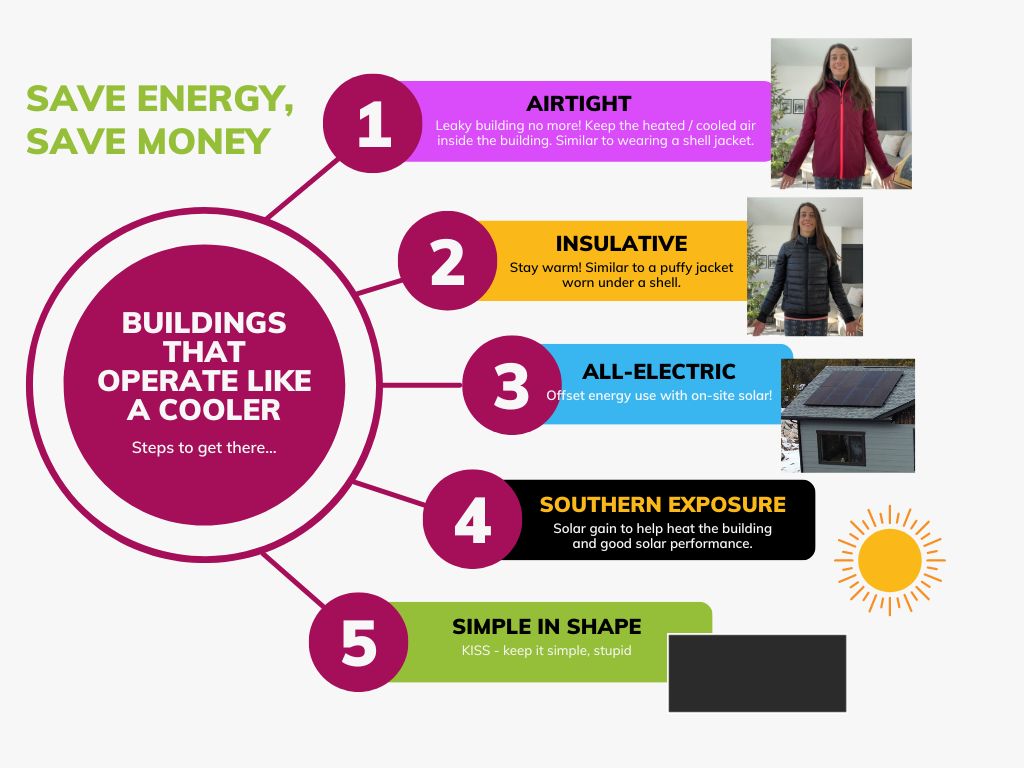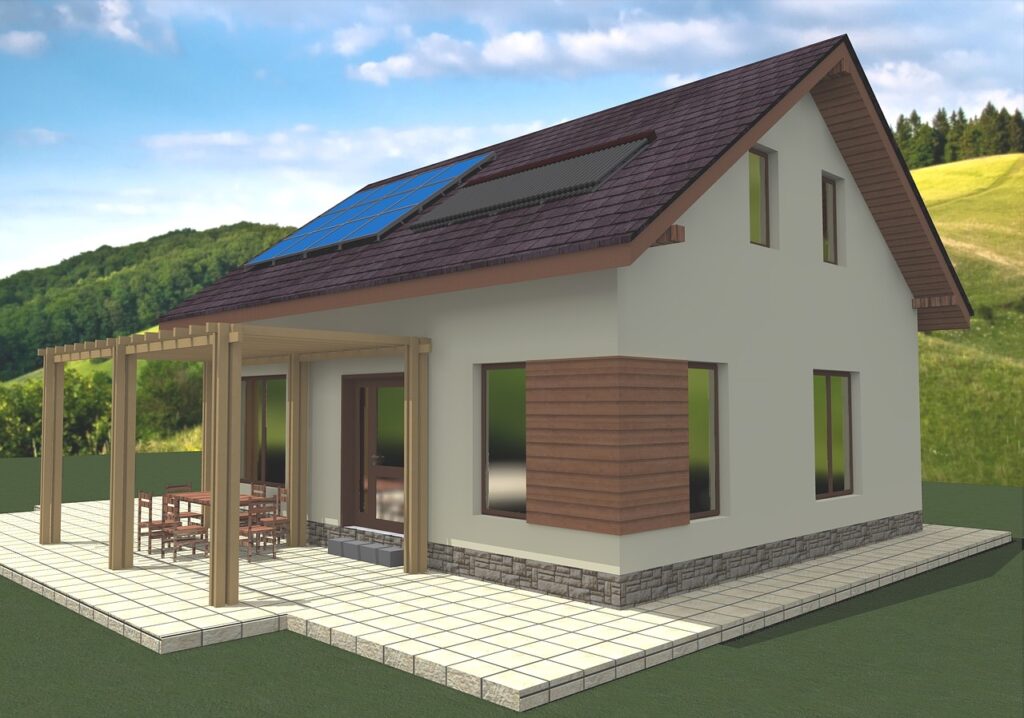A well-built cooler results in using less ice to keep items cold. This is a similar concept to building a well-built building that will result in less energy usage. If you build a structure that is air-tight and well-insulated, similar to a Yeti Cooler (or Artic, etc.), then the size of the mechanical systems used to heat and cool that building can be greatly reduced.
USING A COOLER FOR DAYS
Have you ever used a Yeti Cooler, or similar, to keep food and beverages cold over several days? Say… a river trip for a few days?! Which (side note), if you’ve never done an overnight river trip, you absolutely should! Being surrounded in nature, seeing views only accessible via the river is incredible.
Anyways, have you noticed that if that cooler is kept shut, the food and beverages will have no problem staying cold? That’s because they’re protected from the warm outdoor air (assuming a summer situation here). The more that cooler is opened, however, the stuff inside will not stay as cold for as long.
Think of a leaky building as that cooler that’s being opened consistently, it’s losing the conditioned air (the air that you spent money to heat or cool) to the outside and is therefore costing more to operate.
SAVE ICE… AND MONEY.
To cut down on energy bills, a goal of “net zero” should be at the top of the list. Being net-zero means that you are essentially using the energy that you are producing with on-site renewables. This is only possible with an efficient structure and an all-electric building because the energy used can be offset with on-site renewables, like solar. You can’t offset fossil fuels (i.e., natural gas or propane) with renewables. It’d be like using cow flatus or methane leaking from a mine to operate the building. Oh wait… that is a possibility! Check out how Aspen Skiing Company is capturing methane gas from a local mine to power it’s mountain operations.
IT’S ELECTRIC
Let’s get back on track… It’s much easier, however, just opting for all-electric That’s why it’s important to incorporate electric-only to power the building and all of your heating, cooling, ventilation and hot water needs. Note that having a building be all-electric has other implications such as a potential for increased service size and detailed electrical load calculations, but this will be covered in an upcoming blog post.
Let’s get more specific… there are a few key design strategies that should be implemented to help your building easily obtain the “net-zero” status that are outside of the airtightness and insulation factors (aka, the “cooler” factors). These strategies include site selection, orientation of the building, and shape of the building.
SITE SELECTION
Selecting a site that has southern exposure (assuming you’re in the northern hemisphere), is critical as you can utilize solar gain from the winter sun to heat your building and solar shading (from properly sized overhangs) in the summer to keep it cool.
There is a really great website (susdesign.com/tools.php) that you can use to help to figure out how large the overhangs on the house should be. Check it!
PASSIVE SOLAR DESIGN
This design strategy is referred to as “passive solar design”. A building that is elongated on the east/west axis will have the most southern exposure, which is ideal. For the roof, using the south-facing sides of the roof will get the most performance from solar panels. There are many options of a roof design and will depend on if you are utilizing trusses and a vented roof or joists and a non-vented roof.
Keep the potential of solar in mind when choosing the roof type. A subsequent blog post will go into a deeper dive on roof assemblies.
“KISS” – KEEP IT SIMPLE, STUPID
Lastly, keeping the shape of the building simple will make the air sealing task much easier. A cooler is a rectangle and that is what was implemented in the YCH build. The less corners and bump-outs or any design aspect that will make the continuity of the primary air barrier should be limited. Think of a racetrack… more turns means the more that you’ll have to slow down; in a building, any change in direction requires a change in material, which results in more time due to more attention to detail and more money spent (because time = money). Like they say, “KISS… keep it simple, stupid”.
SUMMARY
Let’s summarize… the keys to building a building that will cost close to nothing to operate will need to be
- airtight,
- insulative,
- all-electric,
- have southern exposure and be
- simple in shape.
Utilizing these aspects will result in a building that is energy efficient and pleasant to occupy. Now that you understand the key elements and goals for the design, we’ll talk about how to get there with the building process and more design details in future blog posts.


